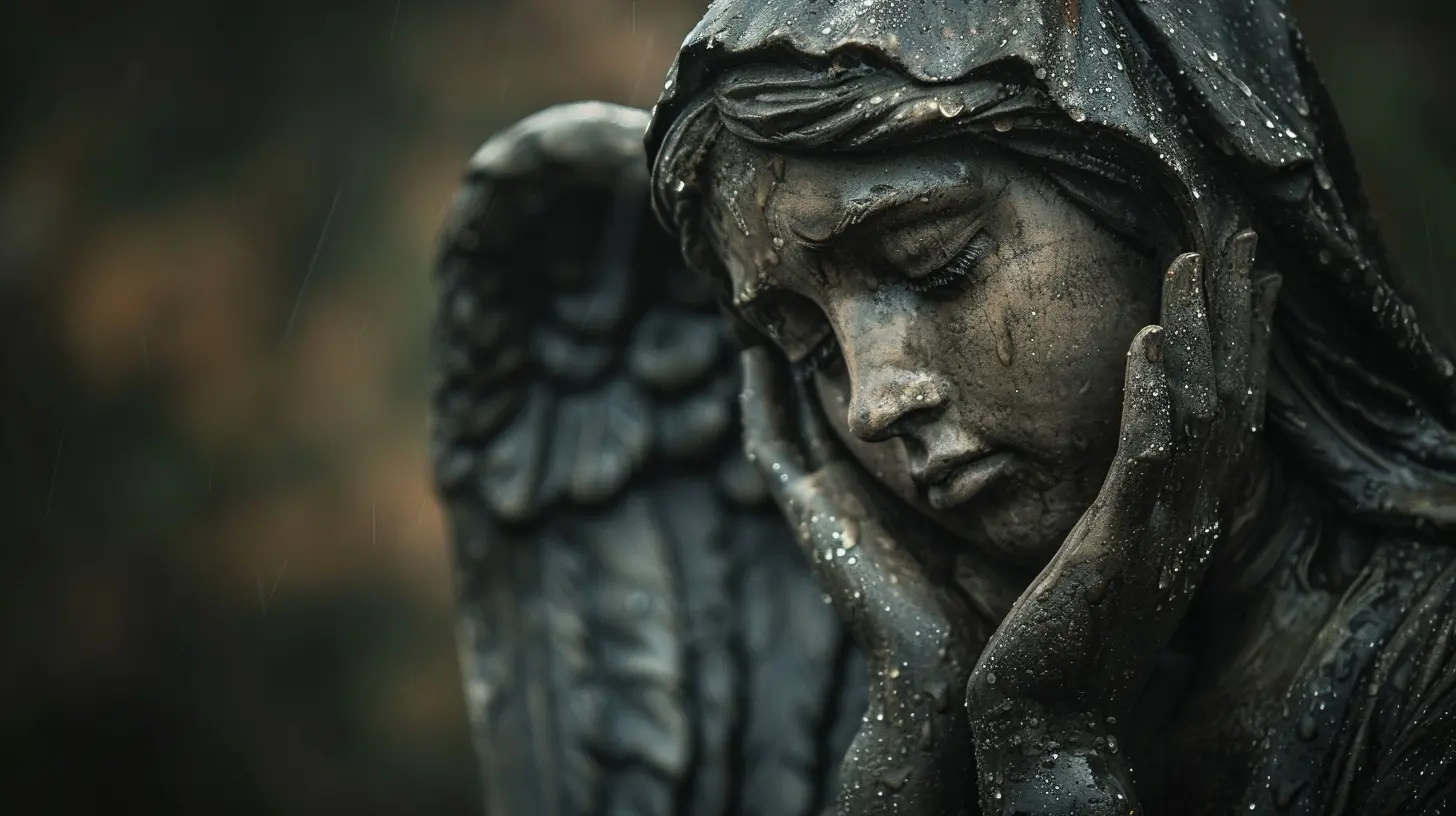How Different Cultures Approach Grief and Mourning
20 May 2025
Grief is one of the few universal experiences that every human being will face at some point in life. But have you ever noticed how different cultures express grief in vastly different ways? While some societies mourn loudly and publicly, others prefer quiet reflection. Some honor their dead with grand celebrations, while others adhere to solemn, deeply personal rituals.
The way we grieve is shaped by our beliefs, traditions, and the people around us. So let's take a deep dive into how various cultures across the world handle loss and mourning. Buckle up—this is going to be an emotional but enlightening ride. 
The Western Approach: Black Attire & Solemn Funerals
In many Western countries, particularly in the U.S. and parts of Europe, mourning is often associated with wearing black, attending a funeral service, and offering condolences to the grieving family. Funerals tend to be structured, formal events where loved ones gather to pay their respects.The grieving process in Western cultures generally follows a predictable path:
- A funeral or memorial service is held, usually within a week of the death.
- People offer sympathies through cards, flowers, or food.
- Families may hold wakes or viewings where people share memories of the deceased.
- The grieving process typically lasts for months or even years, but public mourning is usually short-lived.
There's often an unspoken expectation to "move on" after a certain period. While grief counseling is gaining popularity, the idea of openly expressing deep grief long after a funeral may be met with discomfort. 
Día de los Muertos: Celebrating Life in Mexico
Now, if you want to see a culture that views death through a more celebratory lens, look no further than Mexico. Día de los Muertos (Day of the Dead) is a spectacular two-day holiday (November 1st and 2nd) that honors deceased loved ones.Unlike the somber funerals in the West, this tradition is vibrant and full of color. Families create ofrendas (altars) decorated with marigolds, candles, food, and personal items of the deceased. They believe that on these days, the spirits of loved ones return to visit.
Instead of treating death as permanent despair, this holiday celebrates the continuation of life in a different form. It’s a beautiful reminder that those we love are never truly gone—they live on in our memories. 
Mourning in Hindu Culture: Rituals and Rebirth
In Hinduism, death is not seen as the end but as a transition into the next life, thanks to the concept of reincarnation. Grief is certainly present, but it's accompanied by a focus on completing the necessary rituals to help the departed soul on its journey.Hindu funeral practices usually include:
- Cremation: Bodies are traditionally cremated, as fire is believed to free the soul.
- Antyesti (Last Rites): The eldest son (or a close male relative) performs the rituals.
- Mourning Period: The family observes a mourning period of 13 days, avoiding social events.
- Shraddha Ceremony: On the first death anniversary, food and prayers are offered to ensure the soul finds peace.
Hindu mourning emphasizes duty—helping the departed soul reach moksha (liberation). It's a blend of grief and responsibility, with spiritual reassurance that the soul continues its journey. 
African Mourning Traditions: Grief as a Community Affair
In many African cultures, mourning is not just a personal experience—it’s a communal one. Death is typically accompanied by days (sometimes even weeks) of ceremonies, music, and rituals that bring the entire community together.For example, among the Ghanaian Akan people, funerals are massive social events. Families save money for elaborate funerals that can be as grand as weddings. These ceremonies include traditional drumming, singing, and dancing as a way of honoring the deceased.
Contrast this with the Mourning Period in South Africa's Xhosa Tribe, where deep respect and extended grieving are standard. Widows may wear black for an entire year, and mourning involves storytelling, sacrifice, and spiritual rituals to appease the ancestors.
In many African societies, grief is not suppressed; it's expressed outwardly through wailing, ritualistic crying, and community gatherings—ensuring no one grieves alone.
Japan: The Quiet and Deeply Spiritual Mourning
Japanese mourning practices reflect the country’s values of honor, respect, and deep spirituality. The dominant religion, Buddhism, plays a significant role in death rituals.When someone dies in Japan, there's a Buddhist funeral, which often includes:
- A wake (Tsuya), where loved ones gather to say goodbye.
- A cremation ceremony, followed by the careful selection of the deceased's bones using chopsticks (done with utmost respect).
- A memorial service held on specific days after the funeral (7, 49, and 100 days), with continued observance at the 1st, 3rd, 7th, and 13th anniversary of death.
Mourning in Japan tends to be quiet and inward, with subtle expressions of grief rather than loud displays of emotion. Strength in silence is often valued, making the grieving process deeply personal yet structured through traditions.
Tibetan Sky Burials: Returning to Nature
One of the most unique and striking mourning rituals in the world can be found in Tibetan Buddhist communities—the Sky Burial.Instead of cremation or burial, the deceased is placed on a high mountaintop and offered to vultures. Now, that might sound shocking to some, but in Tibetan Buddhism, this is a sacred practice. It reflects their belief in impermanence—that the body is just a vessel, and feeding it to birds is an act of giving back to nature.
This ritual also aligns with Buddhist teachings on detachment from the physical self and the cycle of rebirth. While profoundly different from Western traditions, it's an incredibly spiritual and meaningful farewell.
Islamic Mourning Practices: Simplicity and Submission
In many Islamic cultures, death is viewed as a natural part of life and a test of faith. Islamic funeral traditions emphasize simplicity, humility, and submission to God’s will.Key elements of Islamic grieving include:
- Quick Burials: Islam teaches that the body should be buried as soon as possible, ideally within 24 hours.
- No Embalming or Cremation: The body is washed, wrapped in a simple white shroud, and buried facing Mecca.
- Three-Day Mourning Period: Mourning is encouraged but should not lead to excessive despair, as Muslims believe in the afterlife.
- 40-Day and Annual Remembrances: Families and communities gather to pray and remember the deceased on the 40th day and on anniversaries.
While sorrow is natural, Islam encourages patience and faith over prolonged grief. The belief in the afterlife offers comfort, reinforcing that death is just a transition to eternal life.
The Universality and Uniqueness of Grief
No matter where you’re from, grief hurts. But how we process and express that grief varies dramatically based on cultural norms and spiritual beliefs. Some cultures lean into loud sorrow, while others find solace in quiet reflection. Some rejoice in the memory of the dead, while others observe strict rituals to guide souls to the afterlife.At the end of the day, no way is "right" or "wrong"—grief is personal, shaped by the traditions we inherit and the communities we belong to. But one thing’s for sure: love for those we've lost transcends borders, languages, and customs.
How does your culture approach grief? Share your thoughts in the comments below!
all images in this post were generated using AI tools
Category:
Grief And LossAuthor:

Eliana Burton
Discussion
rate this article
3 comments
Eli McMahon
This article beautifully highlights the diverse ways cultures navigate grief, reminding us that there is no "right" way to mourn. It’s important to honor each individual’s journey through loss, recognizing the profound impact culture has on our healing process.
May 26, 2025 at 2:50 PM

Eliana Burton
Thank you for your thoughtful comment! I'm glad you found the article meaningful and appreciate the importance of honoring diverse grieving processes.
Ariella Wright
This article provides valuable insights into the diverse ways cultures handle grief and mourning. Understanding these different perspectives not only fosters empathy but also enriches our approach to supporting others through their unique mourning processes. Great read!
May 25, 2025 at 4:17 AM

Eliana Burton
Thank you for your thoughtful comment! I'm glad you found the insights valuable and that they promote empathy in supporting others through their grieving processes.
Callisto Pratt
This article opens a fascinating window into the diverse ways cultures navigate grief. I'm eager to learn how these unique approaches shape healing and community connections across the globe!
May 21, 2025 at 4:20 PM

Eliana Burton
Thank you for your thoughtful comment! I'm glad you found the article intriguing and look forward to exploring how these diverse practices can foster healing and strengthen community bonds.



